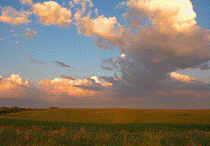North American Prairie Conference
Date of this Version
2004
Abstract
Prairie fens are a rare, fire-dependent wetland type found only in the glaciated Midwest in ice-contact topography along streams or lake boundaries that historically occurred adjacent to prairies and savannas. Due to a strong dependence on cool, alkaline groundwater seepage, they are extremely sensitive to hydrological alterations that result from urban development. While prairie fens are common in glacial interlobate regions, it was still surprising to discover one while conducting a botanical inventory in 2001 in an urban development in Kalamazoo, Michigan. The 295-acre planned unit development (PUD), known as Parkview Hills, is bordered by medium-density residential neighborhoods, a major federal highway, and open lands. Three state-listed plant species and two state-listed animals occur in the fen and calcareous seepage is active in many areas. However, the effects of fire suppress ion , urban development, and a millpond two miles upstream are apparent. Woody encroachment from invasive species, such as glossy buckthorn (Frangula alnus), is severe throughout much of the fen.


Comments
Published in Dave Egan & John A. Harrington, editors, Proceedings of the 19th North American Prairie Conference: The Conservation Legacy Lives On..., University of Wisconsin-Madison, August 8-12, 2004 (Proceedings of the North American Prairie Conference, 19), Madison, WI: University of Wisconsin-Madison, 2004.